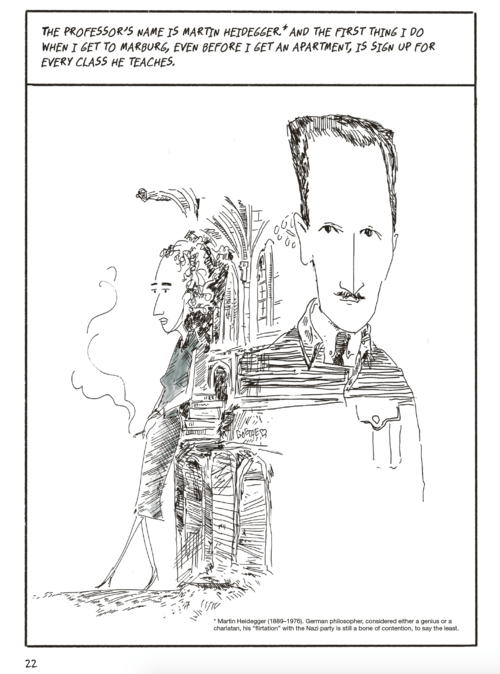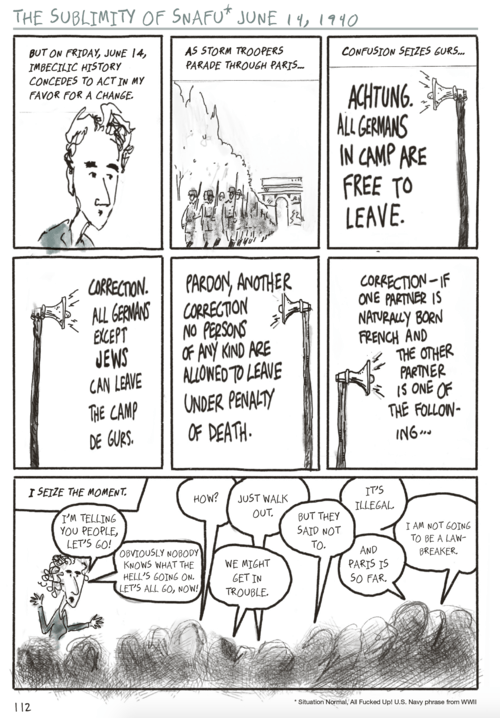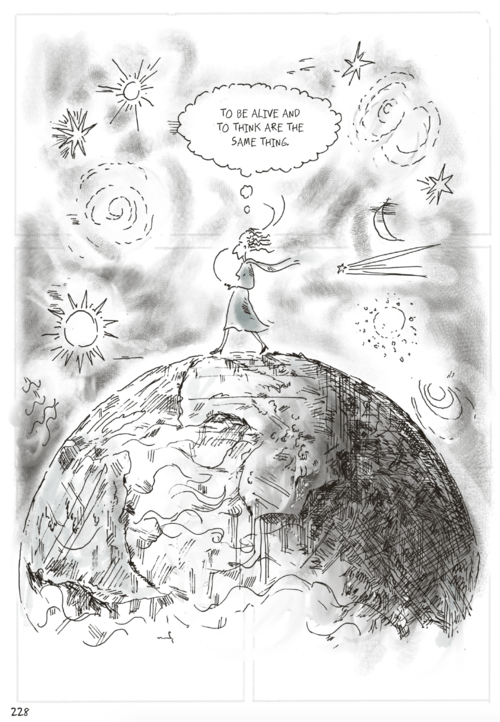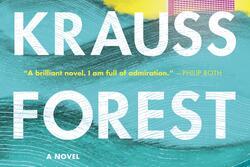Ken Krimstein on "The Three Escapes of Hannah Arendt"
In The Three Escapes of Hannah Arendt, author and artist Ken Krimstein illustrates the extraordinary life of one of the greatest philosophers of the 20th century. Exclusively for JWA, Krimstein shares excerpts from his graphic memoir and discusses his journey to bring Hannah Arendt’s story to life. Below, you will find four pages from The Three Escapes of Hannah Arendt with accompanying commentary from Krimstein below each one.
Like so many other precocious German students, Hannah Arendt was drawn to the ancient university city of Marburg by the allure of a young philosophy professor who, in the words of fellow student (and future philosopher) Emanuel Levinas, “had brought thinking alive.” In the late 1920s, when that professor, Martin Heidegger, was completing his first, and major, work Sein Und Zeit, Being and Time, an orbit of Jewish thinkers formed around him, including: Leo Strauss, Hans Jonas, Herbert Marcuse, Levinas, and Arendt’s future husband, Gunther Stern. Arendt arrived on campus when she was not quite 18 years old. Heidegger was 32. A romantic relationship quickly ensued, and to say that complications followed would be an understatement.
Arendt’s life, and her thinking, give new meaning to the phrase Carpe Diem. Even before she had refined her thoughts into any published books, she approached the world with courage and audacity. For example, after Arendt fled Germany for France, she once again found herself in danger when free France fell to the Nazis. She was placed in a detention camp, but Arendt capitalized on “the fog of confusion,” and used it to enjoin her fellow Jewish inmates at the Gurs Detention Camp to simply, well, walk out. The doubly damned (German and Jewish) Hannah Arendt faced the reality that swapping detention as an “Enemy German Alien,” in France for something even worse under the Nazis was a doomed proposition. Yet, despite her pleas, many inmates demurred, relying on the “promises” and “hopes” that Arendt saw as treacherous. Nevertheless, Arendt “carped the heck out of the diem,” and strode out of Gurs, embarking on the journey that would ultimately result in her second escape.
After 18 years as a stateless person, Hannah Arendt became a United States citizen, published her landmark book, The Origins of Totalitarianism, and took her place as that rarest of birds: a celebrity intellectual. Recognition for her thinking came in the shape of awards, fellowships, book contracts, and academic achievements, including becoming the first woman full professor at Princeton University. This photograph revealed to me the magnitude of this achievement. Unless I’m missing something, she is the only woman in this sea of suit and tie-clad fellows. Her skeptical response is typically contrary and controversial, and shows her embrace of her identity as an outsider, her preferred vantage point for her entire life.
How to pull together so many strands from a life, and a mind, like Hannah Arendt’s? And show it through words and pictures in a book less than 2,000 pages? When I confronted the enigma that is Hannah Arendt, I encountered so many legacies, loose threads, insights, incitements, provocations, and questions that to say it was a challenge to conceive of the last page of my graphic novel would be an understatement. Yet, I knew that the final image had to attempt to sum this all up. And Arendt (as always) provided the answer. Because, I believe, that for Hannah Arendt thinking, a very particular, imaginative, reality-facing, “without-a-banister,” kind of thinking, pulls it all together. Once I had her quote in place, the image of her, astride the Earth, the one and only locus for what she called “The Human Condition” presented itself to me. What’s more, green, the color of natality, of “making new things” that identified and defined Hannah’s vision throughout the entire book now migrated to the entire planet.
The Three Escapes of Hannah Arendt is one of JWA’s 2018-2019 Book Club picks.











